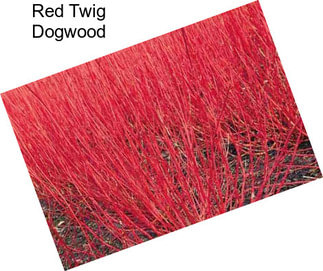
All bare-root plants must be trimmed when planted. Each plant type will be labeled separately for identification. Soak roots in buckets of water until planted. Bare Root - Cut open the bundle (top and roots are tied) and separate all the plants.This is an excellent plant for the massing in the landscape.New, more vibrantly colored stems will be replace the old quickly.If you want the ultimate red color, be sure to remove the oldest stems at ground level annually.It's best in a mulched bed that will be adequately watered.
#Dwarf red twig dogwood full#
Be sure to plant near an area in your landscape that gets full sun, although this plant will tolerate some shade.You can still expect the signature dark red winter stems.This plant only grows around 3-4' tall and wide.The Arctic Fire Dogwood is a more dwarf version of redtwig dogwood.It is widely grown as an ornamental plant, whose available cultivars have been selected for their winter glowing colors.Planting & Care for Deciduous Shrub – Dogwood Cornus sericea is a species of dogwood native to much of North America (excluding the lower Midwest and deep South).Promptly remove root suckers if colonial spread is undesired


An invaluable addition to the winter garden. Small clusters of tiny white flowers are rarely produced in late spring. The foliage turns attractive shades of burgundy-red in the fall, before falling to the ground, revealing the vibrant, glistening, red stems. Fast-growing, adaptable to most soils including wet soils, it bears a dense foliage of ovate green leaves in spring and summer, creating a nice contrast with the reddish stems. Perfect for small gardens, Cornus sericea 'Kelseyi' (Redtwig Dogwood) is a dwarf, rounded, suckering, deciduous shrub of great ornamental value in the landscape.


 0 kommentar(er)
0 kommentar(er)
